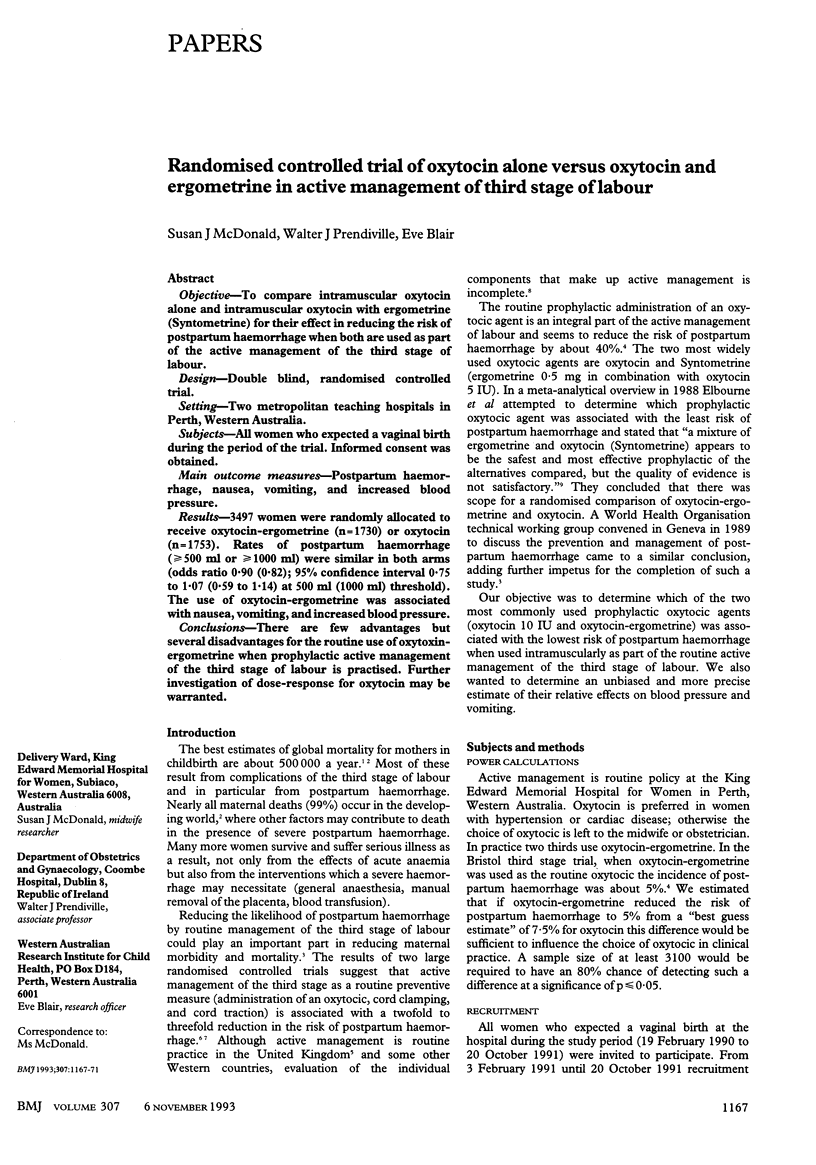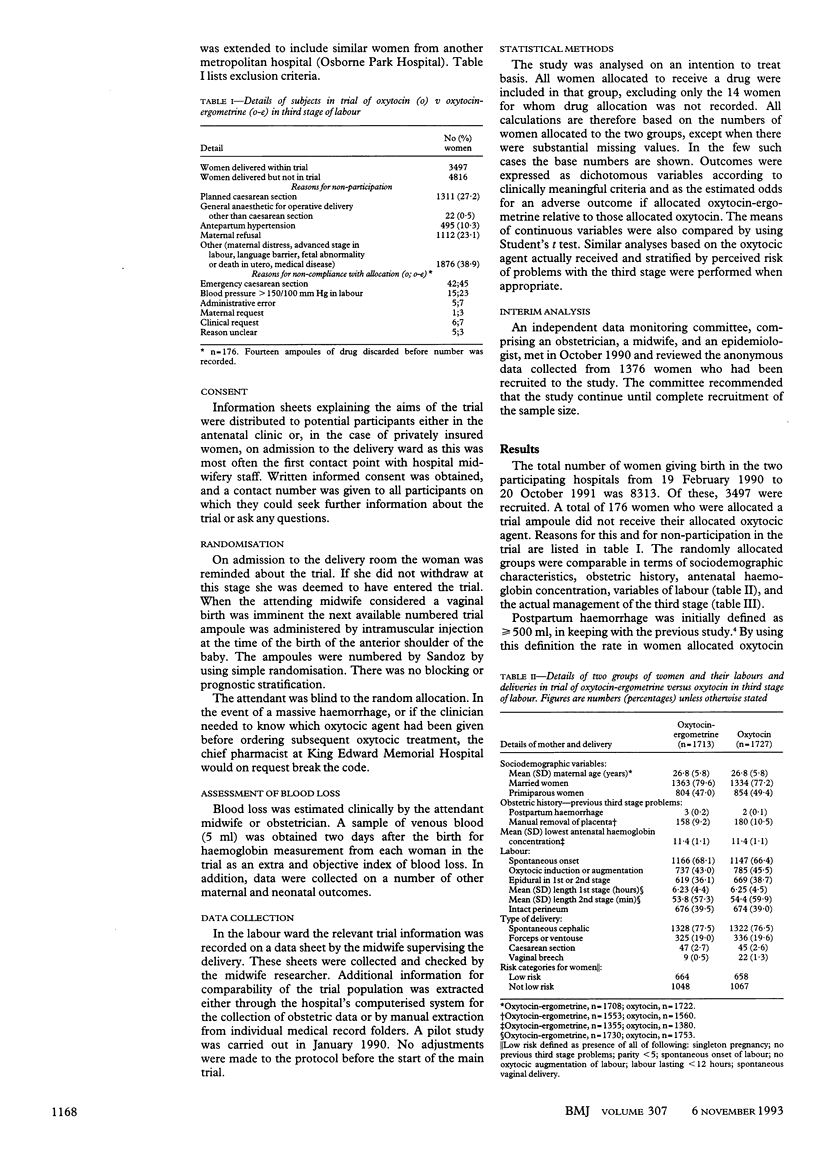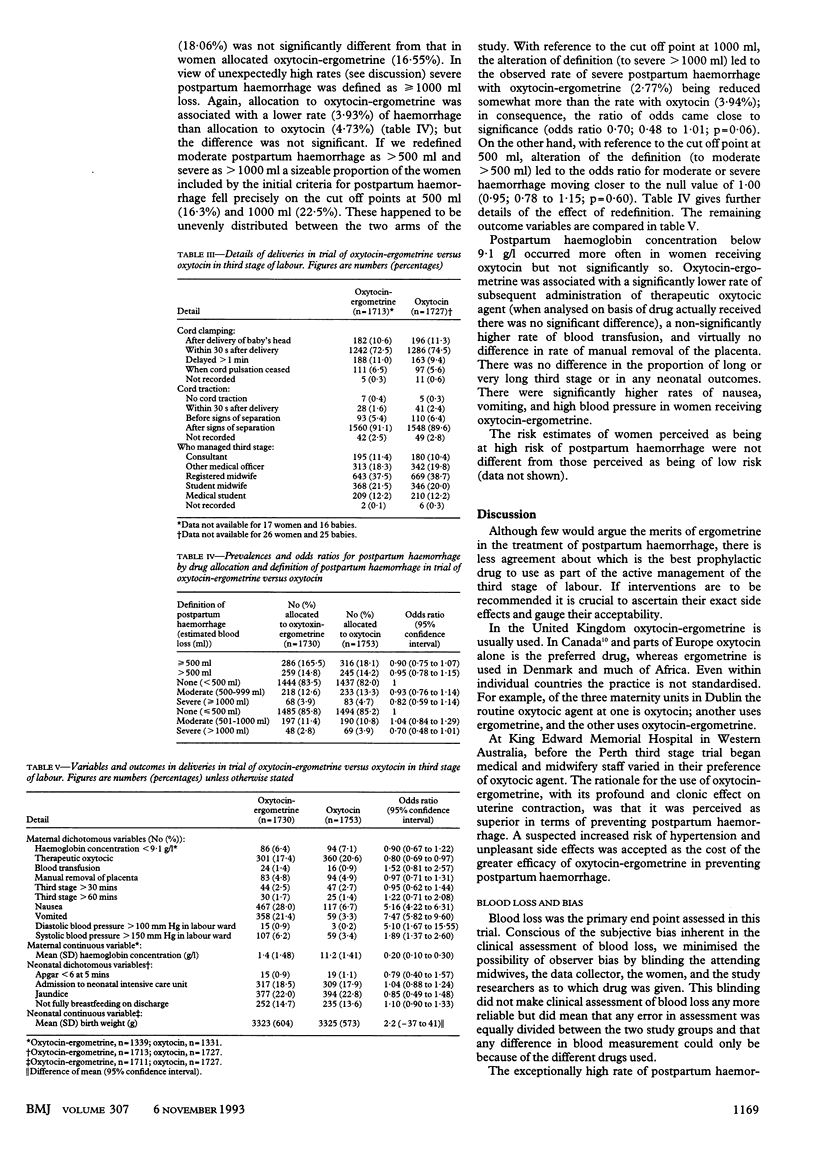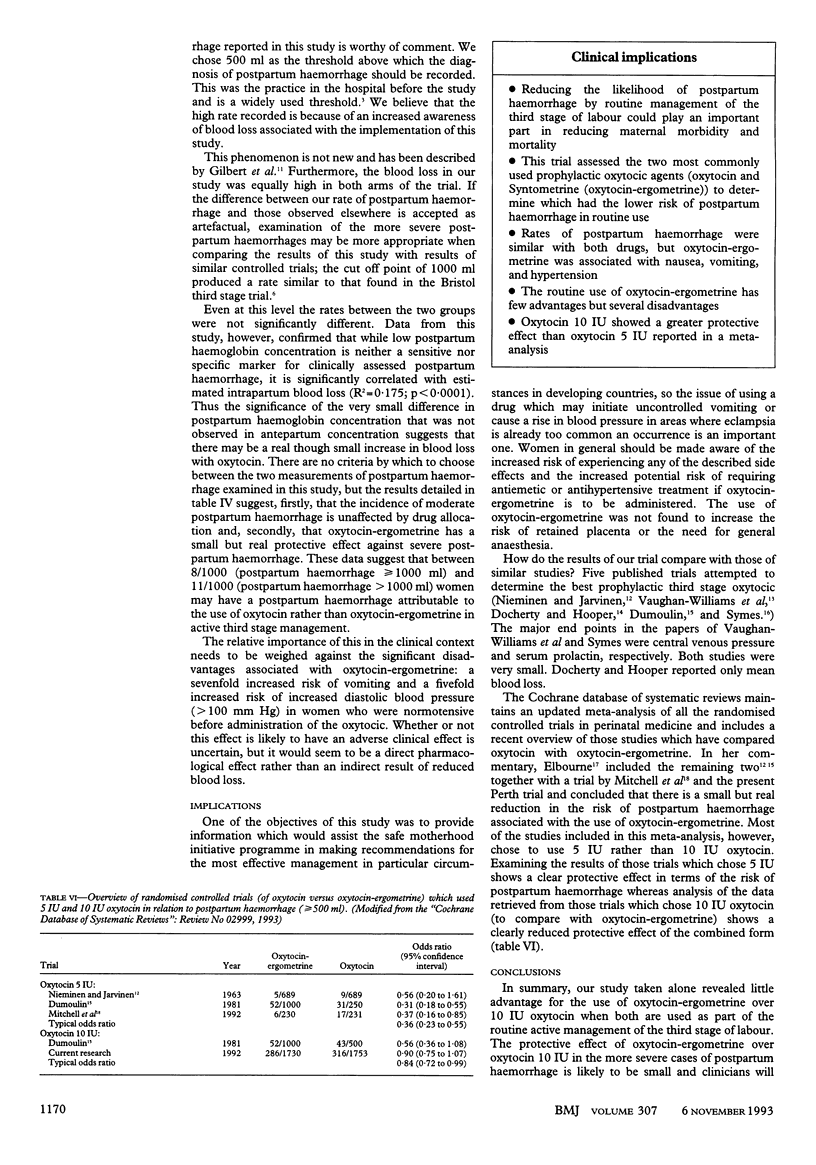Abstract
OBJECTIVE--To compare intramuscular oxytocin alone and intramuscular oxytocin with ergometrine (Syntometrine) for their effect in reducing the risk of postpartum haemorrhage when both are used as part of the active management of the third stage of labour. DESIGN--Double blind, randomised controlled trial. SETTING--Two metropolitan teaching hospitals in Perth, Western Australia. SUBJECTS--All women who expected a vaginal birth during the period of the trial. Informed consent was obtained. MAIN OUTCOME MEASURES--Postpartum haemorrhage, nausea, vomiting, and increased blood pressure. RESULTS--3497 women were randomly allocated to receive oxytocin-ergometrine (n = 1730) or oxytocin (n = 1753). Rates of postpartum haemorrhage (> or = 500 ml or > or = 1000 ml) were similar in both arms (odds ratio 0.90 (0.82); 95% confidence interval 0.75 to 1.07 (0.59 to 1.14) at 500 ml (1000 ml) threshold). The use of oxytocin-ergometrine was associated with nausea, vomiting, and increased blood pressure. CONCLUSIONS--There are few advantages but several disadvantages for the routine use of oxytoxinergometrine when prophylactic active management of the third stage of labour is practised. Further investigation of dose-response for oxytocin may be warranted.
Full text
PDF




Selected References
These references are in PubMed. This may not be the complete list of references from this article.
- Begley C. M. A comparison of 'active' and 'physiological' management of the third stage of labour. Midwifery. 1990 Mar;6(1):3–17. doi: 10.1016/s0266-6138(05)80091-9. [DOI] [PubMed] [Google Scholar]
- Elbourne D., Prendiville W., Chalmers I. Choice of oxytocic preparation for routine use in the management of the third stage of labour: an overview of the evidence from controlled trials. Br J Obstet Gynaecol. 1988 Jan;95(1):17–30. doi: 10.1111/j.1471-0528.1988.tb06476.x. [DOI] [PubMed] [Google Scholar]
- Garcia J., Garforth S., Ayers S. The policy and practice in midwifery study: introduction and methods. Midwifery. 1987 Mar;3(1):2–9. doi: 10.1016/s0266-6138(87)80003-7. [DOI] [PubMed] [Google Scholar]
- Gilbert L., Porter W., Brown V. A. Postpartum haemorrhage--a continuing problem. Br J Obstet Gynaecol. 1987 Jan;94(1):67–71. doi: 10.1111/j.1471-0528.1987.tb02255.x. [DOI] [PubMed] [Google Scholar]
- Kwast B. E. Postpartum haemorrhage: its contribution to maternal mortality. Midwifery. 1991 Jun;7(2):64–70. doi: 10.1016/s0266-6138(05)80229-3. [DOI] [PubMed] [Google Scholar]
- NIEMINEN U., JAERVINEN P. A. A COMPARATIVE STUDY OF DIFFERENT MEDICAL TREATMENTS OF THE THIRD STAGE OF LABOUR. Ann Chir Gynaecol Fenn. 1964;53:424–429. [PubMed] [Google Scholar]
- Prendiville W. J., Harding J. E., Elbourne D. R., Stirrat G. M. The Bristol third stage trial: active versus physiological management of third stage of labour. BMJ. 1988 Nov 19;297(6659):1295–1300. doi: 10.1136/bmj.297.6659.1295. [DOI] [PMC free article] [PubMed] [Google Scholar]
- Prendiville W., Elbourne D., Chalmers I. The effects of routine oxytocic administration in the management of the third stage of labour: an overview of the evidence from controlled trials. Br J Obstet Gynaecol. 1988 Jan;95(1):3–16. doi: 10.1111/j.1471-0528.1988.tb06475.x. [DOI] [PubMed] [Google Scholar]
- Vaughan Williams C., Johnson A., Ledward R. A comparison of central venous pressure changes in the third stage of labour following oxytocic drugs and diazepam. J Obstet Gynaecol Br Commonw. 1974 Aug;81(8):596–599. doi: 10.1111/j.1471-0528.1974.tb00523.x. [DOI] [PubMed] [Google Scholar]


